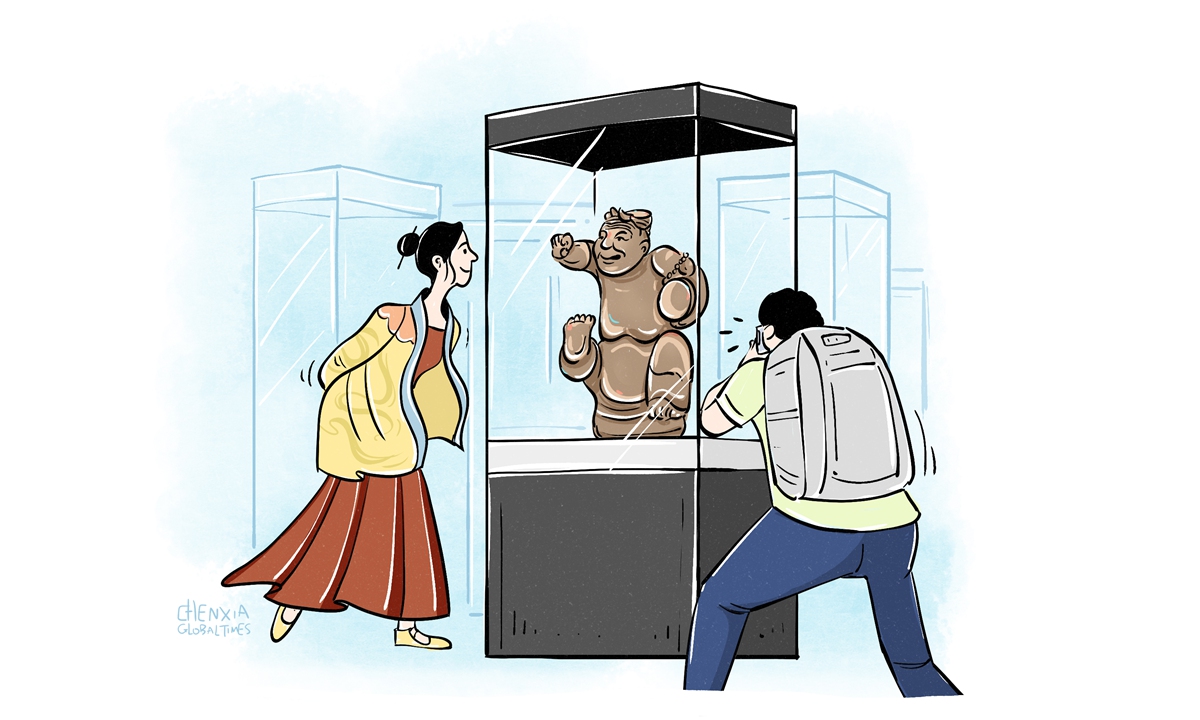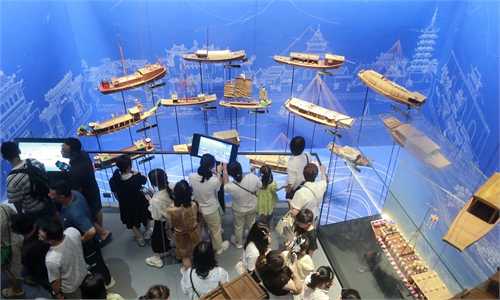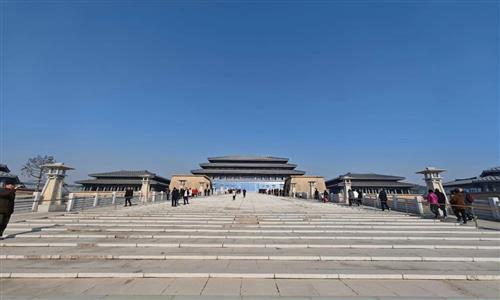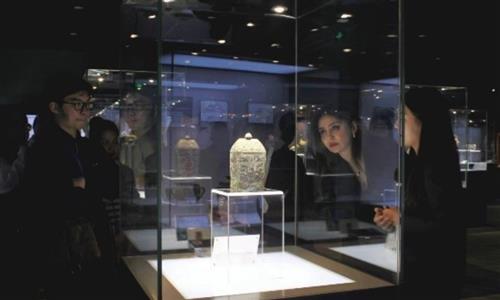ARTS / CULTURE & LEISURE
Museums pillars of China’s cultural tourism

Illustration: Chen Xia/Global Times
Recently, the international non-profit Themed Entertainment Association (TEA) and the infrastructure consulting firm AECOM jointly released a report, which reveals that the total number of visits to the world's top 20 museums in 2023 reached 99.76 million, a significant increase from 57.13 million in 2022, marking a 65.9 percent year-on-year growth.In the Asia-Pacific region, the top 20 museums saw an even more impressive surge in attendance, with 71.77 million visits in 2023, up 167.5 percent from 26.83 million in 2022.
Among the world's top 20 most-visited museums in 2023, seven are in China: the National Museum of China, China Science and Technology Museum, Nanjing Museum, Suzhou Museum, Hunan Museum, Hubei Provincial Museum, and Guangdong Museum.
AECOM's website highlights that "Museums remain only 6 percent below 2019 levels, but activities in different regions of the world vary greatly and point to market share shifts occurring in cultural attractions. Asia - and in particular China - has emphasized and incentivized museum development and visitation, resulting in a larger share of the Top 20 Museums Worldwide list being held by Chinese institutions."
Zhang Peng, an associate professor at Nanjing Normal University, told the Global Times that Chinese museums secured a front-row seat in the top 20 most-visited museums worldwide thanks to a combination of the museums inherent strengths, government support, technological advancements and applications, and international cooperation.
China's strong cultural heritage and rich historical collections play a crucial role in attracting visitors, Zhang said, adding that the Chinese government's emphasis on cultural development and museum construction, supported by policies and funding, has significantly improved museum services and the visitor experience.
"In Asia, the increases are essentially due to China, where governmental policies have led to the rapid development of new museums," said the report.
In 2023, China added 268 newly registered museums, bringing the total number in the country to 6,833, ranking among the top globally. The continued improvement of free admission policies, with over 90 percent of Chinese museums now offering free entry, has also played a role.
Starting in June, cities like Beijing, Hangzhou, and Suzhou removed most reservation requirements for tourist attractions, making it easier for visitors to plan their trips and enhance the travel experience of visitors.
The integration of culture and tourism has made museums a key component of travel itineraries, with innovative exhibition methods and technological means, such as digital exhibitions and interactive experiences, enhancing the appeal and educational value of exhibits, particularly for younger audiences, Zhang noted.
Young people have become the main force behind the museum craze, with tickets in high demand and museum visits becoming a must-do activity for many visitors. On social media platforms, young people share videos or posts about their museum visits, post photos of cultural relics, and buy related cultural and creative products.
"The popularity of museums can be attributed to two main factors. First, as people's living standards have improved, their desire for cultural and spiritual fulfillment has become more pressing. Museums, as places that showcase the achievements of outstanding traditional culture, naturally become the top choice for many," Liu Zheng, a member of the China Cultural Relics Academy, told the Global Times.
According to Liu, with the advancement of digital technology, tools like AI have been applied to museum exhibits, breaking the limitations of time and place.
As important centers of social education, museums in China are also engaging the public through various educational activities and lectures, boosting public participation, Zhang said. Data from the National Cultural Heritage Administration showed that Chinese museums hosted over 40,000 exhibitions and 380,000 educational activities in 2023, attracting a record 1.29 billion visitors. Additionally, Chinese museums are actively participating in international exchanges and collaborations, raising their global profile and attracting foreign tourists.
For example, in July, an exhibition named On Top of the Pyramid: The Civilization of Ancient Egypt, co-hosted by the Shanghai Museum and the Supreme Council of Antiquities of Egypt, was held at the Shanghai Museum, offering visitors an artistic feast with 788 precious artifacts from Egypt and promoting cultural exchanges and mutual learning between China and Egypt.
The author is a reporter with the Global Times. life@globaltimes.com.cn



